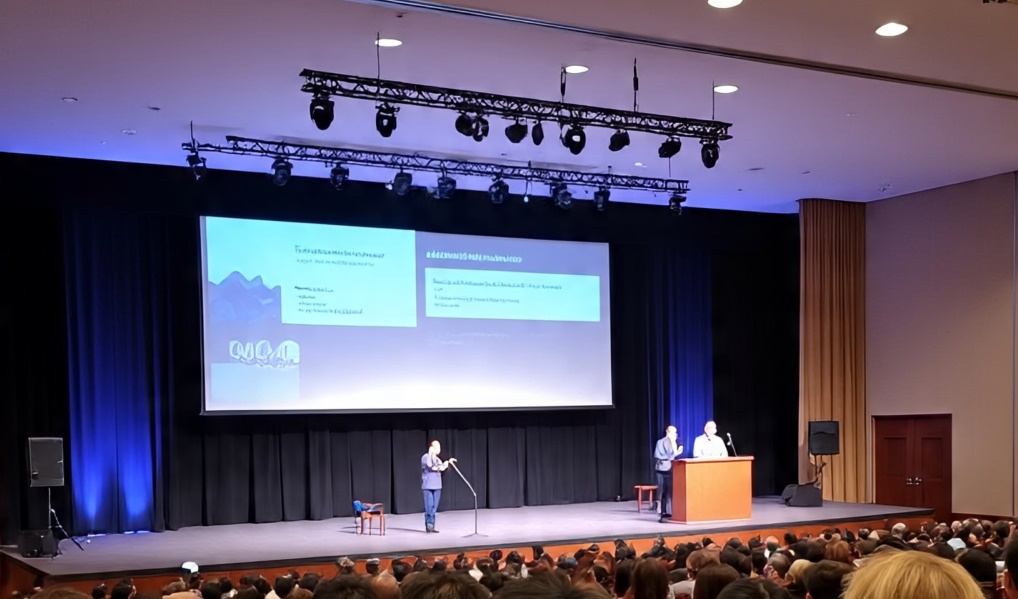Sports and Human Resource Development: Exploring the Impact of Sports Activities at Kendari's Religious Monument
Keywords:
Health Improvement, Human Resource Development, Social Skills, SportsAbstract
The monument is not only a religious symbol but also a center for diverse sports activities. This article explores how sports activities at Kendari Religious Monument affect the physical health, social skills, and work productivity of the community. This research aims to explore the impact of sports activities on human resource development (HRD) in Kendari Religious Monument. Diverse sports activities, such as jogging, gymnastics, yoga, and other sports competitions, not only provide physical health benefits but also contribute to the development of social skills, leadership, and individual productivity. The research method used was qualitative with a case study approach, involving in-depth interviews with participants of sports activities, direct observation, and analysis of related documents. The results showed that participation in sports activities at Monumen Religi significantly improved people's physical health, which had a positive impact on work productivity and quality of life. In addition, sports activities also strengthen social skills such as teamwork, communication, and leadership, especially through participation in team sports and community events. Community empowerment and inclusiveness were also seen to increase, with different walks of life actively engaging in sports activities, creating a more inclusive and harmonious environment. However, the research also uncovered several challenges, including the need for improved infrastructure and adequate sports facilities as well as continued support from the government and private sector. The conclusion of this study confirms that sports activities in Kendari's Religious Monument have great potential in human capital development. Therefore, an integrated strategy is needed to maximize these benefits, including improved facilities and sustainable sports programs. Thus, the Monument can continue to serve as an effective center for human capital development and contribute to the overall well-being of the people of Kendari.
References
Andersen, W., & Loland, S. (2015). Sport and the obligation of solidarity. Sport, Ethics and Philosophy, 9(3).
Canan, F., & Ataoglu, A. (2010). The influence of sports on anxiety, depression, and perceived problem solving ability. In Anadolu Psikiyatri Dergisi (Vol. 11, Issue 1).
Claus, C., Miller, J., & Miller, T. B. (2022). What Are the Health Benefits of Organized Sports? Frontiers for Young Minds, 10.
Cunningham, G. B., Buzuvis, E., & Mosier, C. (2018). Inclusive spaces and locker rooms for transgender athletes. Kinesiology Review, 7(4).
de Oliveira, C., Saka, M., Bone, L., & Jacobs, R. (2023). The Role of Mental Health on Workplace Productivity: A Critical Review of the Literature. In Applied Health Economics and Health Policy (Vol. 21, Issue 2).
Denzin. (2009). Handbook Of Qualitatif Research. Revista Brasileira de Linguística Aplicada, 5(1).
Dobrijevic, G., Dordevic Boljanovic, J., Alcakovic, S., & Lazarević, S. (2020). Perception Of Cohesion In Interactive Sports Teams. Facta Universitatis, Series: Physical Education and Sport. https://doi.org/10.22190/fupes180831040d
Edwards, D. J., Edwards, S. D., & Basson, C. J. (2004). Psychological Well - Being and Physical Self-Esteem in Sport and Exercise. International Journal of Mental Health Promotion, 6(1).
Fenton, S. A. M., Duda, J. L., Appleton, P. R., & Barrett, T. G. (2017). Empowering youth sport environments: Implications for daily moderate-to-vigorous physical activity and adiposity. Journal of Sport and Health Science, 6(4).
Fiuza-Luces, C., Valenzuela, P. L., Gálvez, B. G., Ramírez, M., López-Soto, A., Simpson, R. J., & Lucia, A. (2024). The effect of physical exercise on anticancer immunity. Nature Reviews Immunology, 24(4).
Hennink, M., Hutter, I., & Bailey, A. (2019). Qualitatif Research Methods. In British Library Cataloguing in Publication dat.
Indrawan, J., & Aji, M. P. (2019). Olahraga sebagai Sarana Pemersatu Bangsa dan Upaya Perdamaian Dunia. Jurnal Ilmiah Hubungan Internasional (International Relations Journal), 10(20).
Irmansyah, J., Lumintuarso, R., Sugiyanto, F. X., & Sukoco, P. (2020). Children’s social skills through traditional sport games in primary schools. Cakrawala Pendidikan, 39(1).
Kochanek, J. (2020). Promoting Cultural Competence in Athletic Training Education: An Intergroup Dialogue Approach. Athletic Training Education Journal, 15(2).
Laras Ayu Ningtyas. (2023). Kawasan Tugu MTQ Spot Olahraga Favorit. LPP RRI (Lembaga Penyiaran Publik Radio Republik Indonesia). https://www.rri.co.id/sulawesi-tenggara/daerah/129245/kawasan-tugu-mtq-spot-olahraga-favorit?utm_source=news_main&utm_medium=internal_link&utm_campaign=General Campaign
Lowe, H., Haddock, G., Mulligan, L. D., Gregg, L., Fuzellier-Hart, A., Carter, L. A., & Kyle, S. D. (2019). Does exercise improve sleep for adults with insomnia? A systematic review with quality appraisal. In Clinical Psychology Review (Vol. 68).
Mays, A. M., Kim, S., Rosales, K., Au, T., & Rosen, S. (2021). The Leveraging Exercise to Age in Place (LEAP) Study: Engaging Older Adults in Community-Based Exercise Classes to Impact Loneliness and Social Isolation. American Journal of Geriatric Psychiatry, 29(8).
McDonald, B., & Spaaij, R. (2022). Social inclusion and solidarity building through sport for recently arrived migrants and refugees in Australia. In Handbook of Social Inclusion: Research and Practices in Health and Social Sciences. https://doi.org/10.1007/978-3-030-89594-5_102
Moustakas, L. (2022). Sport for Social Cohesion: Transferring from the Pitch to the Community? Social Sciences, 11(11).
Prasetyo, H. A. (2022). Tugu MTQ Sulawesi Tenggara Jadi Spot Wisata Olahraga Favorit. GenPI.Co Sultra. https://sultra.genpi.co/wisata/2227/tugu-mtq-sulawesi-tenggara-jadi-spot-wisata-olahraga-favorit
Sampe, D. D. (2024). Tugu Religi Kota Kendari Jadi Destinasi Favorit Masyarakat. LPP RRI (Lembaga Penyiaran Publik Radio Republik Indonesia). https://rri.co.id/sulawesi-tenggara/hiburan/559840/tugu-religi-kota-kendari-jadi-destinasi-favorit-masyarakat
Subramanyam, V. (2013). Building self-confidence in athletes. Indian Journal of Positive Psychology, 4(2).
Upe, A. (2022). Metode Riset Kuantitatif dan Kualitatif (Mengurai Perbedaan Ke Arah Mixed Methods). Yogyakarta: Diandra Creative.
Warburton, D. E. R., & Bredin, S. S. D. (2017). Health benefits of physical activity: A systematic review of current systematic reviews. In Current Opinion in Cardiology (Vol. 32, Issue 5).
Yang, Y. (2020). Research on the Influence of Large-scale Sports Events on the Development of Urban Sports Tourism Industry based on the Analysis of Computer Network Technology. Journal of Physics: Conference Series, 1574(1).
Zasimova, L. (2022). Sports facilities’ location and participation in sports among working adults. European Sport Management Quarterly, 22(6).



